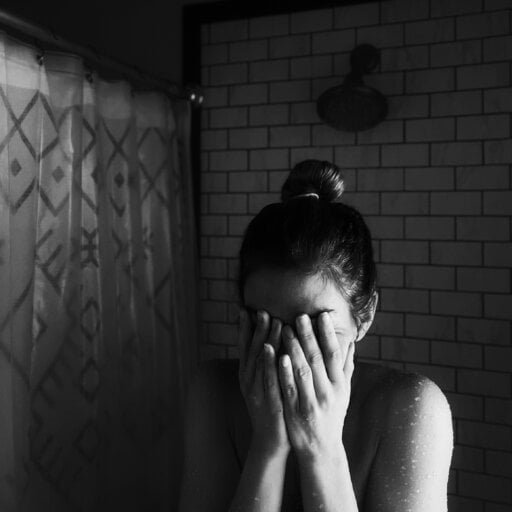In this article, you will gain a deeper understanding of anxiety attacks and the toll they can take on your well-being. We will explore the symptoms, causes, and strategies to cope with these overwhelming episodes. By shedding light on the intricacies of anxiety attacks, you will be equipped with the knowledge and empathy needed to support yourself or someone you care about who may be experiencing them. Let us embark on this journey of understanding and compassion together.
What is Anxiety Attack?
An anxiety attack, also known as a panic attack, is a sudden episode of intense fear or discomfort that is accompanied by various physical, emotional, cognitive, and behavioral symptoms. It is a response to perceived threats or stressors and can occur unexpectedly or in response to specific triggers. Anxiety attacks can be overwhelming and debilitating, making it difficult for individuals to carry out their daily activities.
Definition of Anxiety Attack
An anxiety attack is characterized by a sudden onset of intense fear or apprehension, often accompanied by physical symptoms such as rapid heartbeat, chest pain, shortness of breath, trembling, sweating, and dizziness. Individuals experiencing an anxiety attack may also report feelings of impending doom, difficulty breathing, and a sense of losing control. These attacks typically peak within a few minutes and can last up to 30 minutes or longer.
Common Symptoms of Anxiety Attack
Anxiety attacks can manifest in various ways, and the symptoms may vary from person to person. Some common symptoms include:
Physical Symptoms
- Rapid heartbeat or palpitations
- Chest pain or tightness
- Shortness of breath or feeling of suffocation
- Sweating or chills
- Trembling or shaking
- Dizziness or lightheadedness
- Nausea or stomach discomfort
- Headaches or migraines
- Muscle tension or aches
Emotional Symptoms
- Intense fear or apprehension
- Feeling of impending doom or danger
- Irritability or restlessness
- Uncontrollable feelings of worry
- Difficulty concentrating or focusing
- Feeling detached from oneself or reality
- Fear of losing control or going crazy
- Overwhelming sense of dread
Cognitive Symptoms
- Racing thoughts or mental agitation
- Intrusive or obsessive thoughts
- Difficulty making decisions
- Persistent worrying or ruminating
- Catastrophic thinking or expecting the worst
- Memory problems or forgetfulness
Behavioral Symptoms
- Avoidance of triggering situations or places
- Seeking reassurance or constant validation
- Compulsive behaviors or rituals
- Restlessness or pacing
- Social withdrawal or isolation
- Difficulty sleeping or insomnia
- Changes in appetite or weight
Difference Between Anxiety Attack and Panic Attack
Anxiety attacks and panic attacks are often used interchangeably, but there are some subtle differences between the two:
- Duration: Anxiety attacks tend to last longer than panic attacks, which usually peak within a few minutes.
- Triggers: While both types of attacks can be triggered by external factors, anxiety attacks can also occur unexpectedly without any identifiable trigger.
- Intensity: Panic attacks are often described as more intense and sudden, with a surge of overwhelming fear or terror, whereas anxiety attacks may involve a more gradual and prolonged buildup of anxiety.
- Specific Symptoms: Although there is overlap in symptoms, panic attacks are commonly associated with a fear of dying or losing control, while anxiety attacks may be accompanied by excessive worrying or apprehension.
It’s important to note that both anxiety attacks and panic attacks can be distressing and may require professional help for management and treatment.
Causes and Triggers
Anxiety attacks can be triggered by various factors, including biological, environmental, psychological, and traumatic experiences. Understanding the underlying causes and triggers can help individuals and their loved ones develop effective coping strategies and seek appropriate treatment.
Biological Factors
Some individuals may be predisposed to anxiety attacks due to biological factors such as genetics or imbalances in brain chemistry. Certain neurotransmitters, such as serotonin and norepinephrine, play a significant role in regulating mood and anxiety, and disruptions in their levels can contribute to the development of anxiety disorders.
Environmental Factors
Environmental factors can also contribute to the occurrence of anxiety attacks. Stressful life events, such as financial difficulties, relationship problems, work-related stress, or major life transitions, can trigger or exacerbate anxiety symptoms. Additionally, exposure to traumatic experiences or a history of childhood adversity may increase the risk of developing anxiety disorders.
Psychological Factors
Individuals with certain personality traits, such as perfectionism, high sensitivity to criticism, or a tendency to worry excessively, may be more prone to experiencing anxiety attacks. Additionally, underlying mental health conditions, such as depression or post-traumatic stress disorder (PTSD), can contribute to the development or worsening of anxiety symptoms.
Traumatic Experiences
Experiencing a traumatic event, such as physical or sexual abuse, witnessing violence, or being involved in a car accident, can significantly increase the risk of developing anxiety disorders, including anxiety attacks. Trauma can lead to a heightened state of fear and anxiety, making individuals more susceptible to future anxiety-provoking situations.
Types of Anxiety Disorders
Anxiety attacks are commonly associated with various anxiety disorders. Understanding the different types of anxiety disorders can help individuals and their loved ones recognize and address the specific symptoms they may be experiencing.
Generalized Anxiety Disorder (GAD)
Generalized Anxiety Disorder is characterized by excessive and uncontrollable worry or anxiety about various aspects of life, such as work, relationships, health, or everyday situations. Individuals with GAD may experience physical symptoms, such as muscle tension, restlessness, fatigue, and difficulty concentrating.
Panic Disorder
Panic Disorder is characterized by recurrent panic attacks that often occur unexpectedly and are accompanied by intense fear or discomfort. Individuals with panic disorder may develop a fear of future attacks and may avoid certain places or situations associated with their panic attacks.
Social Anxiety Disorder
Social Anxiety Disorder, also known as social phobia, is characterized by an intense fear of social situations and a fear of being judged or embarrassed by others. Individuals with social anxiety disorder may experience anxiety attacks in social settings, leading to avoidance of social interactions and significant distress.
Specific Phobias
Specific Phobias are characterized by an intense and irrational fear of specific objects, animals, or situations. The fear is disproportionate to the actual danger posed by the phobia and can trigger anxiety attacks when individuals are exposed to their phobic stimuli.
Post-Traumatic Stress Disorder (PTSD)
Post-Traumatic Stress Disorder can develop after experiencing or witnessing a traumatic event. Individuals with PTSD may experience intrusive thoughts, nightmares, flashbacks, and anxiety attacks related to the traumatic event.
Obsessive-Compulsive Disorder (OCD)
Obsessive-Compulsive Disorder is characterized by intrusive and repetitive thoughts (obsessions) and the need to engage in ritualistic behaviors or mental acts (compulsions) to alleviate anxiety. Anxiety attacks may be triggered by fears related to OCD obsessions or when individuals are unable to perform their compulsive behaviors.

Recognizing an Anxiety Attack
Recognizing the symptoms of an anxiety attack is crucial for individuals and their loved ones to understand and manage their anxiety effectively. Anxiety attacks can manifest in various ways, and the symptoms may differ from person to person.
Physical Symptoms
Physical symptoms of an anxiety attack may include a rapid or pounding heartbeat, chest tightness or pain, shortness of breath or hyperventilation, sweating, trembling or shaking, dizziness or lightheadedness, nausea or stomach discomfort, headaches, and muscle tension or aches.
Emotional Symptoms
Emotionally, individuals experiencing an anxiety attack may feel intense fear or terror, a sense of impending doom, irritability or restlessness, uncontrollable worry, difficulty concentrating or focusing, feeling detached from oneself or reality, fear of losing control or going crazy, and an overwhelming sense of dread.
Cognitive Symptoms
Cognitive symptoms of an anxiety attack may involve racing thoughts or mental agitation, intrusive or obsessive thoughts, difficulty making decisions, persistent worrying or ruminating, catastrophic thinking or expecting the worst, and memory problems or forgetfulness.
Behavioral Symptoms
Behaviorally, individuals experiencing an anxiety attack may exhibit avoidance of triggering situations or places, seeking reassurance or constant validation, engaging in compulsive behaviors or rituals, restlessness or pacing, social withdrawal or isolation, difficulty sleeping or insomnia, and changes in appetite or weight.
Managing Anxiety Attacks
While anxiety attacks can be distressing, there are several strategies and treatments available to help manage and alleviate symptoms. It’s important for individuals experiencing anxiety attacks to work closely with healthcare professionals to develop a personalized treatment plan that best suits their needs.
Breathing and Relaxation Techniques
Deep breathing exercises and relaxation techniques can help individuals experiencing an anxiety attack regain control of their breath and calm their body and mind. Techniques such as diaphragmatic breathing, progressive muscle relaxation, or guided imagery can promote relaxation and reduce the intensity of anxiety symptoms.
Cognitive-Behavioral Therapy (CBT)
Cognitive-Behavioral Therapy is a widely used and effective approach for treating anxiety disorders. CBT aims to identify and modify negative thoughts and beliefs that contribute to anxiety and teaches individuals adaptive coping strategies. Through CBT, individuals can learn to challenge and change their thought patterns, manage their anxiety, and develop effective problem-solving skills.
Medication
In some cases, medication may be prescribed to manage anxiety symptoms, particularly in severe cases or when other treatment approaches have not provided sufficient relief. Antidepressants, anti-anxiety medications, or beta-blockers may be prescribed to help regulate brain chemistry, reduce anxiety levels, and promote overall well-being. It’s important to consult with a healthcare professional before starting any medication regimen.
Lifestyle Changes
Making positive lifestyle changes can also contribute to managing anxiety attacks. Engaging in regular exercise, maintaining a healthy diet, getting enough sleep, avoiding excessive caffeine or alcohol intake, and practicing stress management techniques can help reduce anxiety and improve overall well-being.
Support Systems
Building a support system of friends, family, or support groups can provide individuals with the emotional support and understanding they need during anxiety attacks. Sharing experiences, seeking guidance, and receiving validation from others who can relate to their struggles can be empowering and comforting.
Self-Help Strategies
In addition to professional help, individuals can also incorporate self-help strategies into their daily lives to manage anxiety attacks more effectively. These strategies can empower individuals to take an active role in their mental health and well-being.
Understanding Triggers
Being aware of the triggers that contribute to anxiety attacks is essential. By identifying and understanding these triggers, individuals can take proactive steps to avoid or manage them effectively. Keeping a journal or using a smartphone app to track episodes and potential triggers can help individuals gain insight into their anxiety patterns.
Maintaining a Healthy Lifestyle
Taking care of one’s physical health can have a positive impact on mental health. Prioritizing regular exercise, eating a balanced diet, getting enough sleep, and reducing the consumption of stimulants like caffeine or nicotine can contribute to overall well-being and reduce anxiety levels.
Daily Stress Management
Practicing daily stress management techniques can help individuals reduce anxiety and prevent the onset of anxiety attacks. Engaging in activities such as deep breathing exercises, yoga, meditation, or journaling can provide a sense of calm and promote emotional well-being.
Mindfulness and Meditation
Mindfulness and meditation practices can help individuals develop skills to live in the present moment and manage anxious thoughts and feelings. Mindfulness involves intentionally focusing attention on the present moment without judgment, while meditation involves sitting quietly and redirecting thoughts to a specific object or focus.
Challenging Negative Thoughts
Negative thoughts and beliefs can perpetuate anxiety attacks. Learning to challenge and reframe negative thoughts with more rational and balanced thinking can help individuals reduce anxiety and gain a better perspective on their fears. Cognitive restructuring techniques, such as thought stopping or cognitive restructuring exercises, can be helpful in this process.
Professional Help
Seeking professional help is crucial for individuals experiencing severe anxiety attacks or anxiety disorders. Mental health professionals, such as psychiatrists, psychologists, or counselors, are trained to diagnose and treat various anxiety disorders and can provide valuable support and guidance.
Finding a Therapist
When seeking a therapist, it’s important to find someone who specializes in anxiety disorders and has experience treating anxiety attacks. Asking for recommendations from healthcare providers, friends, or family members, or utilizing online directories can help individuals find a therapist who is a good fit for their specific needs.
Types of Therapies
Various therapeutic approaches can be effective in treating anxiety attacks and anxiety disorders. In addition to Cognitive-Behavioral Therapy (CBT), other evidence-based therapies, such as Acceptance and Commitment Therapy (ACT), Dialectical Behavior Therapy (DBT), or Eye Movement Desensitization and Reprocessing (EMDR), may be recommended depending on the individual’s needs and preferences.
Benefits of Seeking Professional Help
Seeking professional help for anxiety attacks can provide individuals with the necessary tools and support to manage their symptoms effectively. Therapy offers a safe and non-judgmental space to explore the underlying causes of anxiety, develop personalized coping strategies, and work towards long-term recovery. With professional guidance, individuals can learn to regain control of their lives and find relief from anxiety attacks.
Coping Strategies for Loved Ones
Supporting a loved one experiencing anxiety attacks can make a significant difference in their recovery process. It’s important for loved ones to educate themselves about anxiety, communicate effectively, and offer support without judgment.
Educating Yourself about Anxiety
Educating yourself about anxiety attacks and anxiety disorders can help you gain a better understanding of what your loved one is experiencing. Learning about common symptoms, triggers, and available resources can allow you to provide informed support and recognize when professional help may be necessary.
Listening and Communication
Being a compassionate and empathetic listener is crucial when supporting a loved one with anxiety attacks. Encourage open communication, validate their feelings, and provide a safe space where they can express their fears and concerns without judgment. Avoid minimizing or dismissing their experiences and be patient and understanding.
Offering Support
Offering support can take many forms. Accompanying your loved one to therapy appointments, assisting in finding appropriate treatment resources, or participating in anxiety management activities together can show your support and solidarity. Encourage them to engage in self-care practices, provide reassurance, and celebrate their progress.
Encouraging Treatment
While respecting your loved one’s autonomy, gently encouraging them to seek professional help can be beneficial. Highlight the potential benefits of therapy or medication and emphasize that seeking treatment is a sign of strength rather than weakness. Offer to help them find a therapist or accompany them to their doctor’s appointments if needed.

Preventing Anxiety Attacks
Preventing anxiety attacks involves implementing strategies to manage stress, build resilience, and address any underlying anxiety disorders. Proactive steps can significantly reduce the frequency and intensity of anxiety attacks.
Stress Management
Managing stress is important for preventing anxiety attacks. Engaging in stress-reduction techniques such as exercise, meditation, or hobbies can help individuals cope with stress more effectively and reduce its impact on their mental well-being. Prioritizing self-care activities and setting boundaries can also help manage stress levels.
Building Resilience
Developing resilience can make individuals less vulnerable to anxiety attacks. Building resilience involves cultivating positive coping skills, practicing self-compassion and self-care, fostering healthy relationships, and developing a sense of purpose and meaning in life. Resilience can provide individuals with a buffer against stress and improve their overall mental health.
Healthy Coping Mechanisms
Identifying and implementing healthy coping mechanisms can help individuals manage anxiety and prevent anxiety attacks. Exploring activities such as exercise, creative outlets, spending time in nature, or engaging in hobbies can provide a positive outlet for stress and anxiety.
Seeking Treatment for Underlying Disorders
If an underlying anxiety disorder is present, seeking treatment is crucial for preventing anxiety attacks. Working with healthcare professionals to develop an appropriate treatment plan, following through with therapy or medication as prescribed, and addressing any co-occurring mental health conditions can help individuals manage their anxiety effectively.
When to Seek Emergency Assistance
While anxiety attacks are generally not life-threatening, there are situations when emergency assistance should be sought. It’s important to be aware of the signs and risks associated with anxiety attacks that may require immediate attention.
Signs of a Medical Emergency
If an individual is experiencing symptoms such as extreme chest pain, difficulty breathing, fainting, rapid or irregular heartbeat, severe dizziness, or intense physical discomfort during an anxiety attack, it is essential to seek immediate medical attention. These symptoms may indicate a potential medical emergency or a condition other than anxiety.
Risk of Self-Harm
If an individual experiencing an anxiety attack expresses thoughts of self-harm or suicide, it is important to take these statements seriously. Contact emergency services or a crisis helpline to ensure the person’s safety and connect them with the appropriate help.
Calling Emergency Services
If an anxiety attack persists for an extended period, shows no signs of improvement, or if there are concerns for the individual’s well-being, it may be necessary to call emergency services. Trained professionals can assess the situation and provide appropriate care and support.
Conclusion:
Understanding Anxiety Attacks their causes, and available management strategies is essential for individuals and their loved ones. With the right support, coping mechanisms, and professional help, individuals experiencing anxiety attacks can find relief, regain control, and lead fulfilling lives.
Frequently Asked Questions:
1. What does an anxiety attack feel like?
- Anxiety attacks can manifest as intense fear, palpitations, shortness of breath, trembling, and a sense of impending doom. Physical and emotional symptoms may vary.
2. How do you calm an anxiety attack?
- Calming techniques include deep breathing, mindfulness, grounding exercises, and focusing on the present moment. Finding what works best for you is key.
3. What is the 3 3 3 rule for anxiety attacks?
- The 3 3 3 rule involves taking three deep breaths, naming three things you see, hear, and feel, and moving three parts of your body to ground yourself during an attack.
4. What is a silent anxiety attack?
- Silent anxiety attacks may not have visible symptoms but can still be intense. Internal sensations, racing thoughts, and emotional distress characterize them.
5. How long do anxiety attacks last?
- The duration varies; some last a few minutes, while others may persist longer. Effective coping strategies can help reduce the duration.
6. Do you cry during an anxiety attack?
- Crying is a common response to anxiety attacks. Emotional release through crying can be a natural part of the process.
7. What triggers anxiety?
- Triggers can be diverse, including stress, trauma, life changes, or specific situations. Identifying triggers is essential for effective management.
8. What are the 3 types of panic attacks?
- Panic attacks include unexpected, situationally bound, and situationally predisposed types. Each is characterized by different triggers and features.
9. Can I have a mini anxiety attack? – Yes, mini anxiety attacks, often called “micro-attacks,” can occur. They may have milder symptoms but still cause distress.
10. Can you ignore an anxiety attack? – Ignoring an anxiety attack may intensify symptoms. Acknowledging and addressing it with coping strategies is generally more effective.
11. Is an anxiety attack mental? – While anxiety attacks have psychological components, they also involve physical symptoms. They are a complex interplay of mental and physiological responses.
12. What is a mental breakdown? – A mental breakdown is an emotional and physical collapse, often due to prolonged stress. It can include symptoms like intense anxiety, depression, and an inability to cope.
13. Are panic attacks normal? – Occasional panic attacks are common, especially during times of stress. However, frequent or severe panic attacks may require professional attention.
14. What’s the difference between panic and anxiety? – Anxiety is a general sense of unease, while panic is an intense and sudden surge of fear. Panic attacks are more acute and have specific symptoms.
15. Can anxiety go away by itself? – While some people may experience a decrease in anxiety over time, seeking professional support and using coping strategies often yields more effective results.
16. What not to say during an anxiety attack? – Avoid minimizing the person’s experience. Instead, offer support, encourage slow breathing, and ask how you can help.
17. Does crying help anxiety? – Crying can be a natural emotional release, helping reduce tension and stress. It may provide relief during or after an anxiety attack.
18. Why do I feel anxious for no reason? – Feeling anxious without an apparent cause may be linked to underlying stress, genetics, or biochemical factors. Professional guidance can help explore and address these issues.
19. Can you have an anxiety attack while sleeping? – Yes, nocturnal panic attacks can occur during sleep, leading to sudden awakenings and intense anxiety. Seeking professional guidance can address this issue.
20. How many panic attacks a day is normal? – The frequency varies, but experiencing multiple panic attacks daily may indicate a more severe condition. Seeking professional help is advisable in such cases.
21. How to sleep with anxiety? – Establishing a calming bedtime routine, practicing relaxation techniques, and creating a comfortable sleep environment can aid in managing anxiety for better sleep.
22. How do I break my anxiety cycle? – Breaking the anxiety cycle involves identifying triggers, practicing coping strategies, seeking professional support, and making lifestyle changes to promote overall well-being.
23. Does anxiety go away with age? – While some people experience a reduction in anxiety with age, others may not. Seeking effective coping mechanisms and professional support can contribute to a more balanced mental state over time.




